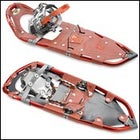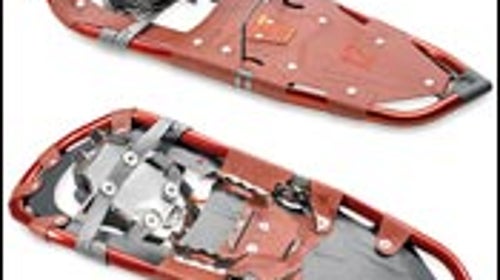Im not sure Id call them weight restrictions,” but its true that most snowshoes come with weight recommendations.” Theyre simply a guideline to ensure that the snowshoes you buy will have enough float to prevent you from sinking up to your hips. Even at that, there are plenty of variables. For instance, I see that you live in Seattle, not far from Our Fair City, Port Townsend. Around here we (meaning, you and me) typically snowshoe on Cascade concrete,” the wet, heavy snow that tends to predominate. On that stuff you can cut the weight recommendations by 25 to 3o percent or moreyou simply float better than you would on powder.
Atlas 1235 Snowshoe
 1235 Snowshoe
1235 SnowshoeSo Id buy as big a snowshoe as you can find, and make the best of it. MSRs Denali EVO ($169; msrcorp.com), for instance, are good starter snowshoes because of their reasonable price, sturdy construction, easy-to-use bindings, and good float (up to 275 pounds, says MSR, adding a quick caveat that a lot depends on snow conditions). Plus, their all-plastic construction makes them extremely rugged, so if you encounter a few rocks or other debris, theyre quite unfazed.
Atlas also makes an excellent snowshoe called the Atlas 1235 ($270; atlassnowshoe.com). Its a little more traditional” in design than the MSR, with soft decking between and aluminum frame. Very light and rugged. The 1235 is Atlass biggest model, and is rated up to 300 pounds. Again, snow conditions matter a lot. The Tubbs Venture 36 ($200; tubbssnowshoes.com) offers a similar design in a less-expensive snowshoe that is meant for flat to rolling terrain. Its a good, all-around snowshoe so long as its not icy, and it has a weight rating of 300 pounds like the Atlas.
The 2008 Winter ���ϳԹ��� Buyers Guide is now online. From snow sports to trail-running to camping, get reviews of more than 300 new gear must-haves.


